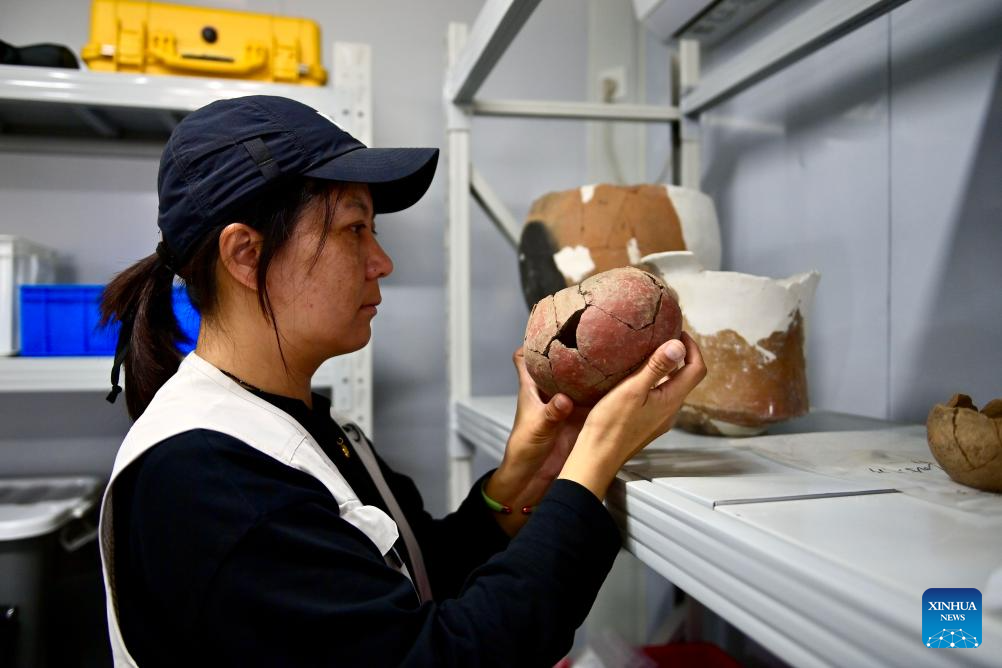A researcher's quest for traces of Hongshan Culture in mountainous areas
2025-11-17 15:15:14 來源:Xinhua

Yu Huaishi views a bone relic at a work station of the Niuheliang relic site in Chaoyang City, northeast China's Liaoning Province, Sept. 28, 2025. Yu Huaishi, a researcher at the Liaoning provincial institute of cultural relics and archaeology, has been searching for pottery fragments in the mountainous areas in western Liaoning since 2017 to identify traces of people's daily life in the Hongshan Culture. (Xinhua/Wu Qinghao)
Hongshan Culture, a Neolithic civilization that emerged around 6,500 years ago in north China, is renowned for its exquisite jade artifacts and sacrificial ritual architectures, but an academic predicament remained where few evidences had been found on life settlements during that period.
Over the past decade, Yu, along with her colleagues, discovered more than 700 archaeological sites, over 600 of which were previously unknown. Their efforts put an end to the academic predicament. One of their discoveries, the Ma'anqiaoshan site, is the largest Neolithic settlement site ever excavated in Liaoning.
Yu was never daunted by steep valleys and gullies during their field surveys. She and her colleagues still keep sorting pottery shards, analyzing data, and reviewing literature at the work station every day. "Mountains and wilderness are harsh, but every artifact found there tells us a story of ages old. We are merely listeners, recorders, and inheritors," said Yu.

Yu Huaishi views a restored pottery pot at a work station of the Niuheliang relic site in Chaoyang City, northeast China's Liaoning Province, Sept. 28, 2025. (Xinhua/Wu Qinghao)

Yu Huaishi (1st R) and her colleagues identify a relic at a work station of the Niuheliang relic site in Chaoyang City, northeast China's Liaoning Province, Sept. 28, 2025. (Xinhua/Wu Qinghao)
Edit:董麗娜
The copyright of the article and the picture belongs to the original author. If there is any infringement, please contact to delete it
